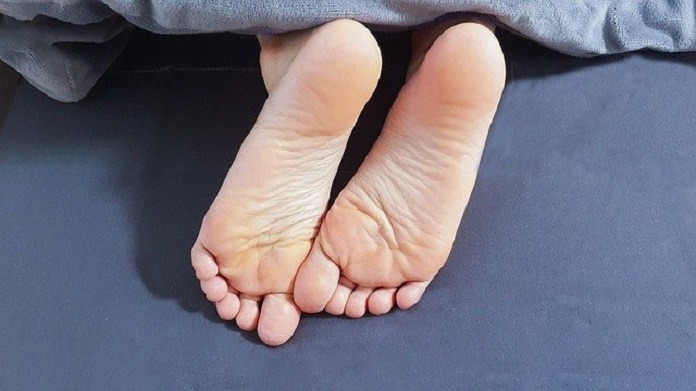Plantar fasciitis is one of the most common heel conditions in adults. Plantar fasciitis occurs when the thick tissues of the heel are inflamed.1
Plantar fasciitis is mainly caused by collagen degeneration in the plantar fascia.2 Its symptoms include pain in the heel during the morning and in the afternoon due to more activity.1
Ten percent of plantar fasciitis cases are caused by running. Most military members and runners between the ages of 40 to 60 years old are affected by this condition.1
Almost 80% of patients experiencing symptoms of plantar fasciitis are able to treat their symptoms within 12 months. Only 5% of patients are reportedly treated through surgery.1
Risk Factors
The risk factors of plantar fasciitis are still not well understood due to the lack of research, but a few known risk factors include obesity, standing for long periods of time, heel spurs, flat feet, and reduced movement of the ankle.1
Since plantar fasciitis is one of the most common conditions in runners, it is proposed that the condition may develop as a result of repetitive injury to the heel. Risk factors associated with running include changes in running speed or distance, not wearing appropriate running shoes, running on uneven surfaces, and or having a short Achilles tendon.1
Diagnosis
Plantar fasciitis is first discovered when it causes gradual pain in the heel. The symptoms tend to worsen during mornings and during a period of no activity using the feet.1
Patients described the pain intensifying after a full day of activity. The pain intensified because the heel endures the weight of the patient during physical activity all day.1
Whilst the inferior heel pain intensifies, patients reported not being able to move their ankle due to its tenderness.1
It can be difficult to diagnose heel pain because of the variety of heel conditions that have similar symptoms.1
Imaging such as radiographs can be done to rule out other heel conditions. If the radiograph results are normal, then bone scans can be used to identify plantar fasciitis from a calcaneal stress fracture.1
Ultrasonography imaging can identify plantar fasciitis from the hyperechoic superficial heel pad of fat. These conditions can be confused because both disorders increase the thickness of the plantar fascia to 5 to 7mm.1
Magnetic resonance imaging can show increased signal intensity that develops due to the thickening of the fascia because of plantar fasciitis. Magnetic resonance imaging can also identify underlying conditions such as spondyloarthropathy.1
Treatment
Applying ice, heat, and massaging the heel can help encourage the tissues in the fascia to heal. Nonsteroidal therapy may be used to help reduce heel pain.1
Stretching and using straps and tapes on the plantar fascia are recommended methods to begin the healing process of the fascia. These methods are proven to help at least half of the patients suffering from plantar fasciitis in the first eight weeks of treatment.1
Custom-made heel pads and orthoses are made to comfort the heel, support the arch of the feet, and support the ankle. The heel pads and orthoses are both used to heal plantar fasciitis.1
A study compared treatments such as corticosteroid injections and taping the heel. More patients preferred mechanical treatments rather than anti-inflammatory or heel cup treatments.1
Corticosteroid injections can be beneficial if provided early in the discovery of the condition. Steroid injections are not the first treatment option for doctors because they have a 10% chance of causing ruptures in the fascia of patients.2
The use of a silicone-cone insert to support the heel through daily activities has been shown to be helpful in many cases.1
The use of splints and casts can prevent the rotation of the ankle and joins. A study showed that patients recorded no improvement when wearing splints at night compared to patients that had no treatments.1
Extracorporeal shock-wave therapy has shown improvements in pain experienced during the morning in runners.1
If no other nonsurgical treatment was effective, then surgery may be required to treat plantar fasciitis. Patients experiencing severe pain for 6 to 12 months may require surgery to release the plantar fascia.1
This surgery can help most patients with plantar fasciitis to recover, but some patients face complications such as calcaneal fracture, nerve damage, flat feet, and swelling of the heel pad.1
Prevention
People who overuse their feet may need to exercise, stretch and massage their heels to prevent plantar fasciitis. A combination of flexing, extending, lifting, and lowering of the feet and toes can help prevent plantar fasciitis.3
Wearing custom-made insoles to support the heel during heavy exercise or old age can prevent the development of plantar fasciitis.3
This article does not provide medical advice. If you are experiencing any foot or heel pain, please speak with your doctor.
References:
1. Buchbinder R. Plantar fasciitis. New England Journal of Medicine. 2004;350(21):2159-2166. doi:10.1056/nejmcp032745
2. Young CC, Rutherford DS, Niedfeldt MW. Treatment of plantar fasciitis. American Family Physician. https://www.aafp.org/afp/2001/0201/p467.html?ref=binfind.com%2Fweb. Published February 1, 2001. Accessed October 2, 2021.
3. Bakayev V, Bolotin A. Plantar Fasciitis Prevention Technique based on Data Aggregation from Computer Diagnostics. icSPORTS 2018. https://www.researchgate.net/profile/Vladislav-Bakayev/publication/327910138_Plantar_Fasciitis_Prevention_Technique_based_on_Data_Aggregation_from_Computer_Diagnostics/links/5bae9076a6fdccd3cb7b9ab5/Plantar-Fasciitis-Prevention-Technique-based-on-Data-Aggregation-from-Computer-Diagnostics.pdf. Published September 2018. Accessed October 2, 2021.
Image by 16704029 from Pixabay



